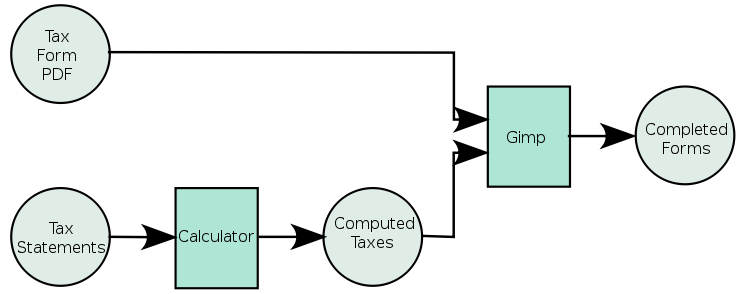Tax SeasonEd Grochowski Written 1-28-2017
Tax Preparation
IntroductionYet another tax season is upon us. This article describes the methodology that I use to prepare my income tax returns. The methodology uses a combination of my own software and open-source software. I have used it for over a decade. Downloading and RasterizingThe first step is to download the tax forms from the government websites. I use a shell script around wget to download the necessary PDF files. I then import the relevant pages into the GNU Image Manipulation Program (Gimp). Rasterized at 600 dots per inch, each page contains 33 million pixels (5100x6600, 8-bit grayscale). This is a lot of pixels even for a modern computer. CalculatingThe calculations are done by my own tax calculator program. Once written, the program is easy to maintain since the tax algorithms change very little from year to year. I enter the raw data from the tax statements, press a button, and the calculator computes the relevant forms, schedules, and worksheets. Merging and CheckingI then import the results into the Gimp as text layers on top of the original PDFs. Positioning must be done manually since the tax forms are not designed to be filled out algorithmically. Two checks are performed: an automated check of the completed forms against the computed taxes, and a semi-automated check of the current year's completed forms against the prior year's. Printing and ArchivingThe completed forms amount to two small booklets. I convert the completed forms to Postscript using ImageMagick and my own software, print them on a laser printer, and mail them to the government. The government is undoubtedly impressed by the superb print quality of the paper passing between our computers. The last step is to archive all files electronically. ConclusionThe tax preparation methodology is reliable, has few external dependencies, and is highly immune to technological obsolescence. This kind of document authoring requires serious computing power. The annual tax season is a great reason to own state-of-the-art computing equipment. |